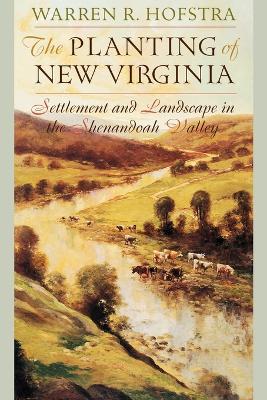Creating the North American Landscape
1 total work
In the eighteenth century, Virginia's Shenandoah Valley became a key corridor for America's westward expansion through the Cumberland Gap. Known as "New Virginia," the region west of the Blue Ridge Mountains set off the world of the farmer from that of the planter, grain and livestock production from tobacco culture, and a free labor society from a slave labor society. In The Planting of New Virginia Warren Hofstra offers the first comprehensive geographical history of one of North America's most significant frontier areas. By examining the early landscape history of the Shenandoah Valley in its regional and global context, Hofstra sheds new light on social, economic, political, and intellectual developments that affected both the region and the entire North American Atlantic world. Paying special attention to the Shenandoah Valley's backcountry frontier culture, Hofstra shows how that culture played a unique role in the territorial struggle between European empires and Native American nations. He weaves together the broad cultural and geographic threads that underlie the story of the valley's place in the early European settlement of eastern North America.
He also reveals the distinctive ways in which settlers shaped the valley's geography during the eighteenth century, a pattern that evolved from "discrete open-country neighborhoods" into a complex "town and country settlement" that would come to characterize-and in many ways epitomize-middle America. An important addition to scholarship of the geography and history of colonial and early America, The Planting of New Virginia, rethinks American history and the evolution of the American landscape in the colonial era.
He also reveals the distinctive ways in which settlers shaped the valley's geography during the eighteenth century, a pattern that evolved from "discrete open-country neighborhoods" into a complex "town and country settlement" that would come to characterize-and in many ways epitomize-middle America. An important addition to scholarship of the geography and history of colonial and early America, The Planting of New Virginia, rethinks American history and the evolution of the American landscape in the colonial era.
